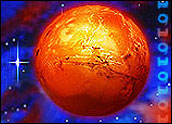
NASA’s MAVEN mission is under way following Monday’s successful launch from Cape Canaveral of a spacecraft that will explore Mars’ upper atmosphere and seek answers to questions about the planet’s evolution.
The Mars Atmosphere and Volatile EvolutioN, or MAVEN, craft is scheduled to travel for 10 months and reach Mars in September 2014.
MAVEN is the first mission targeting Mars’ upper atmosphere, and the expectation is that information gathered from the spacecraft’s orbit will help explain Mars’ evolution. Data from other Mars missions indicates that the now cold, barren planet was once warmer, had a thicker atmosphere, had running water on its surface and possibly was home to microbial life.
“One of the mysteries of Mars is why it lost its atmosphere billions of years ago,” James R. Webb, professor of physics and director of the SARA Observatory at Florida International University, told TechNewsWorld.
“In order for there to be running water on the surface, Mars must have had a much denser and warmer atmosphere in its early days, much like the Earth did before life restructured our atmosphere,” he explained.
Radiation from the sun may have played a role in altering Mars by helping gas to escape from its upper atmosphere. That activity could have thinned the atmosphere, eventually eradicating liquid water.
Complex Interactions
MAVEN will use three suites of scientific instruments to explore Mars’ ionosphere, examining gas isotopes, solar winds and the general composition of the planet’s upper atmosphere.
MAVEN’s sensors will measure the speed of the gasses traveling in the atmosphere, which could help scientists learn more about just how long ago the surface of Mars could sustain running water.
NASA is gathering a wealth of new information about the surface of Mars from Curiosity, the rover roaming the surface of the planet.
However, the MAVEN mission “demonstrates that NASA is interested in understanding Mars as a complete planet — not just its surface,” Jonathan Lunine, director of the Center for Radiophysics and Space Research at Cornell University, told TechNewsWorld.
What Happened?
Investigation of Mars’ previously unexplored upper atmosphere may reveal what happened to cause Mars’ transformation.
“Why do good planets turn bad for life?” Lunine wondered. “Mars lost its air, it lost its greenhouse effect, it lost its water. How did that happen? By measuring the effect of the solar wind on the erosion of the atmosphere of Mars — a small planet whose magnetic field decayed away eons ago — Maven will tell us whether this mechanism of erosion was or was not important in the loss of Mars’ life-protecting atmosphere.”
Additional knowledge about what caused Mars to turn into an inhospitable wasteland could better inform scientists about potential threats to Earth’s atmosphere, suggested FIU’s Webb.
“Understanding these processes could lead us to understanding the long-term effects on our own atmosphere,” he said. “This could be of critical importance to upcoming generations.”





















































